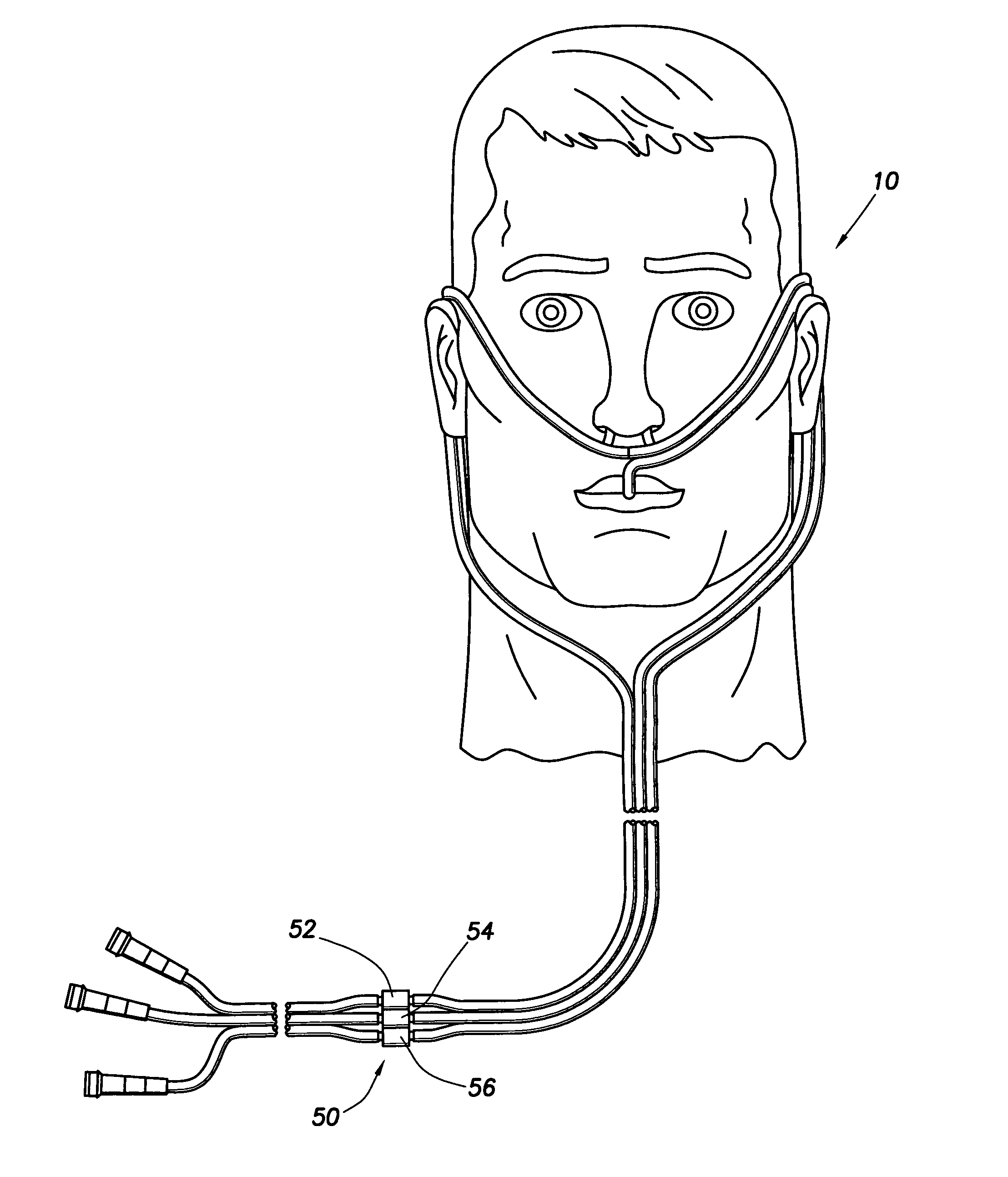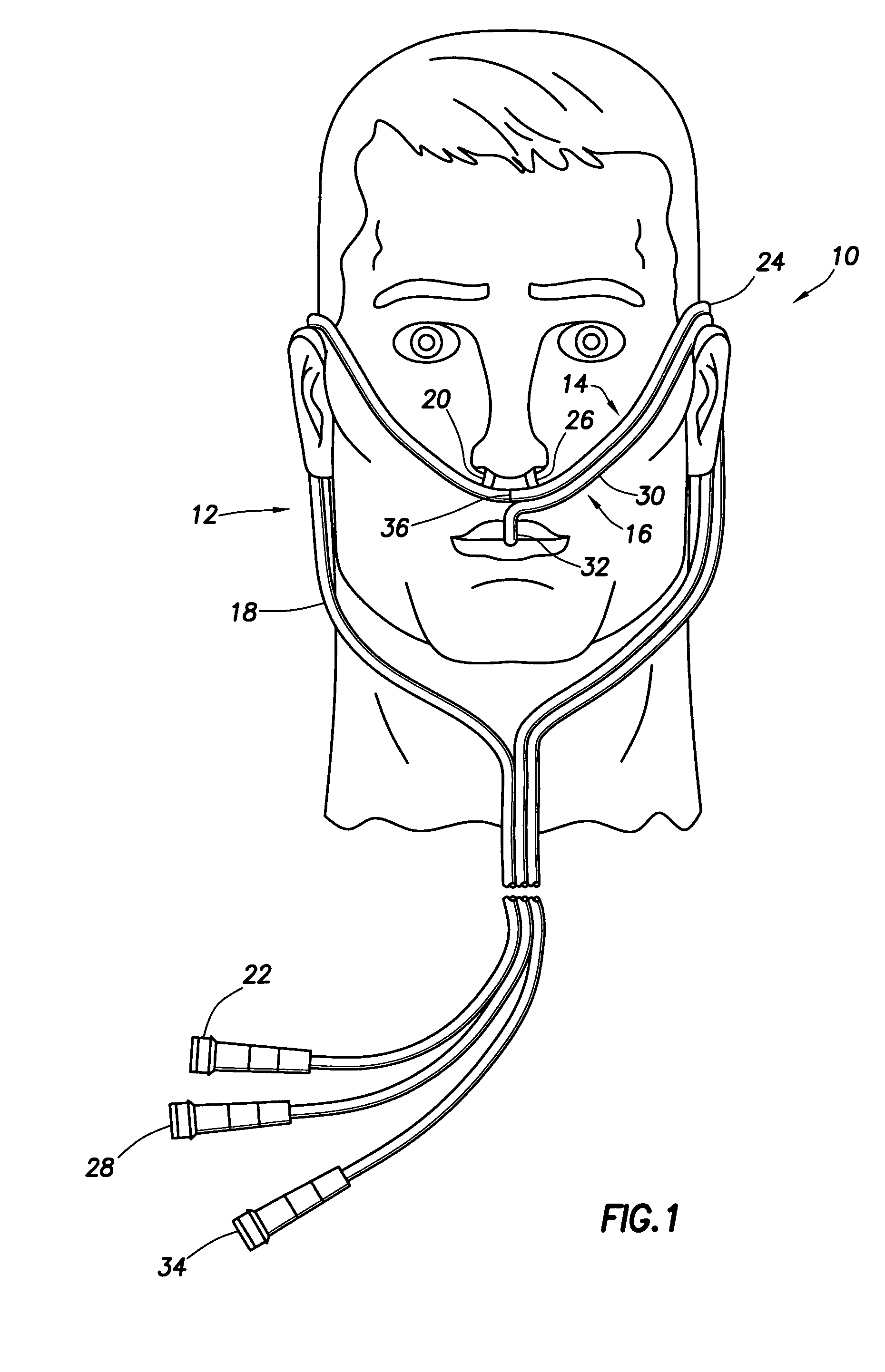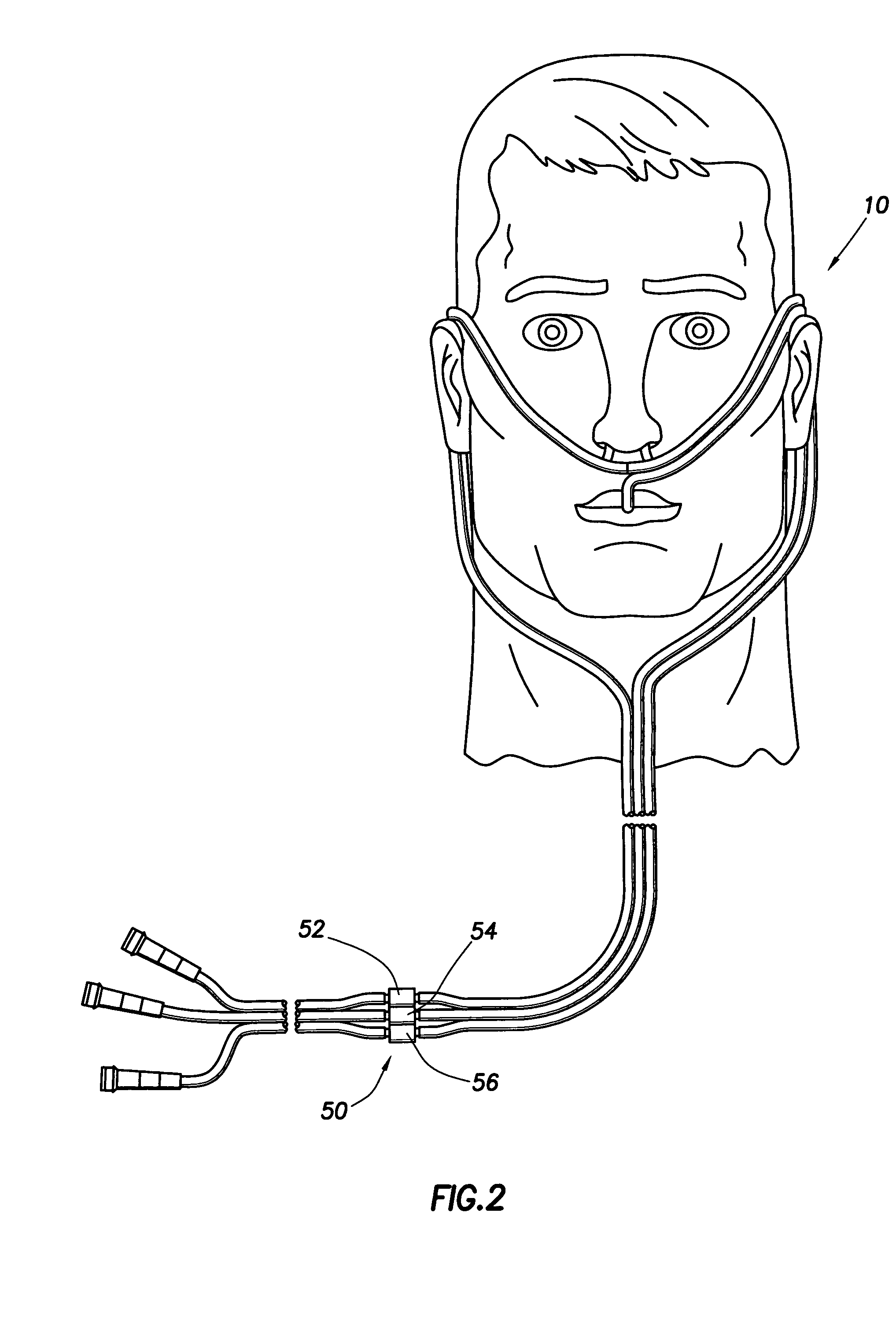Nasal cannula
a cannula and oronasal technology, applied in the field of nasal cannulas, can solve the problems of transferring various ailments from person to person, posing a risk of transmitting various ailments, and running the risk of becoming a vehicle for the transmission of various viruses and/or bacteria
- Summary
- Abstract
- Description
- Claims
- Application Information
AI Technical Summary
Benefits of technology
Problems solved by technology
Method used
Image
Examples
Embodiment Construction
[0009]The problems noted above are solved in large part by improved nasal cannulas. Some illustrative embodiments are a cannula comprising a first nasal tube having a device end and an aperture end (wherein the cannula is configured to place the aperture end in fluid communication with the first naris of a patient), a second nasal tubing having a device end and an aperture end (wherein the cannula is configured to place the aperture end of the second nasal tubing in fluid communication with a second naris of the patient), and an oral tubing having a device end and an aperture end, and the oral tubing mechanically coupled to at least one of the first or second nasal tubing (wherein the cannula is configured to place the aperture end of the oral tubing in fluid communication with the mouth of a patient). The first nasal tubing, the second nasal tubing and the oral tubing are fluidly independent between their aperture ends and their device ends.
[0010]Other illustrative embodiments may ...
PUM
 Login to View More
Login to View More Abstract
Description
Claims
Application Information
 Login to View More
Login to View More - R&D
- Intellectual Property
- Life Sciences
- Materials
- Tech Scout
- Unparalleled Data Quality
- Higher Quality Content
- 60% Fewer Hallucinations
Browse by: Latest US Patents, China's latest patents, Technical Efficacy Thesaurus, Application Domain, Technology Topic, Popular Technical Reports.
© 2025 PatSnap. All rights reserved.Legal|Privacy policy|Modern Slavery Act Transparency Statement|Sitemap|About US| Contact US: help@patsnap.com



